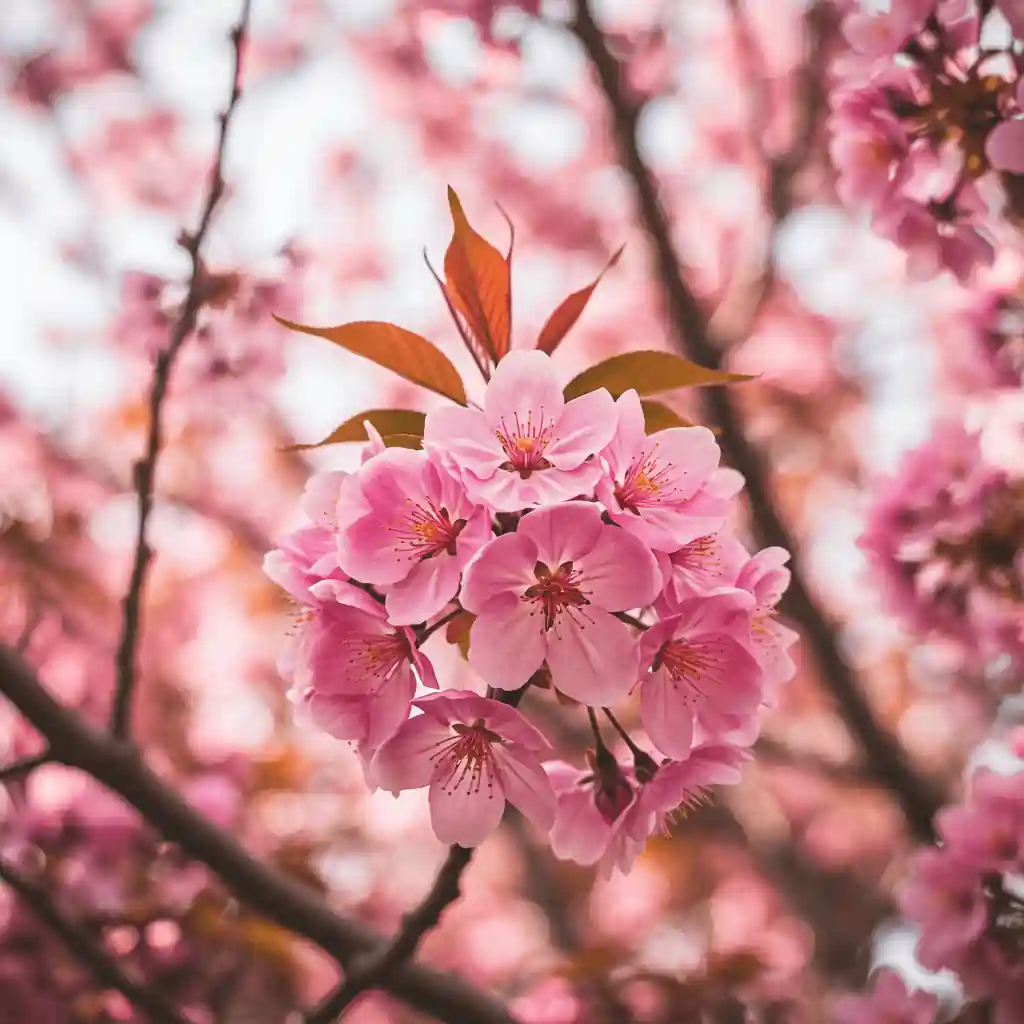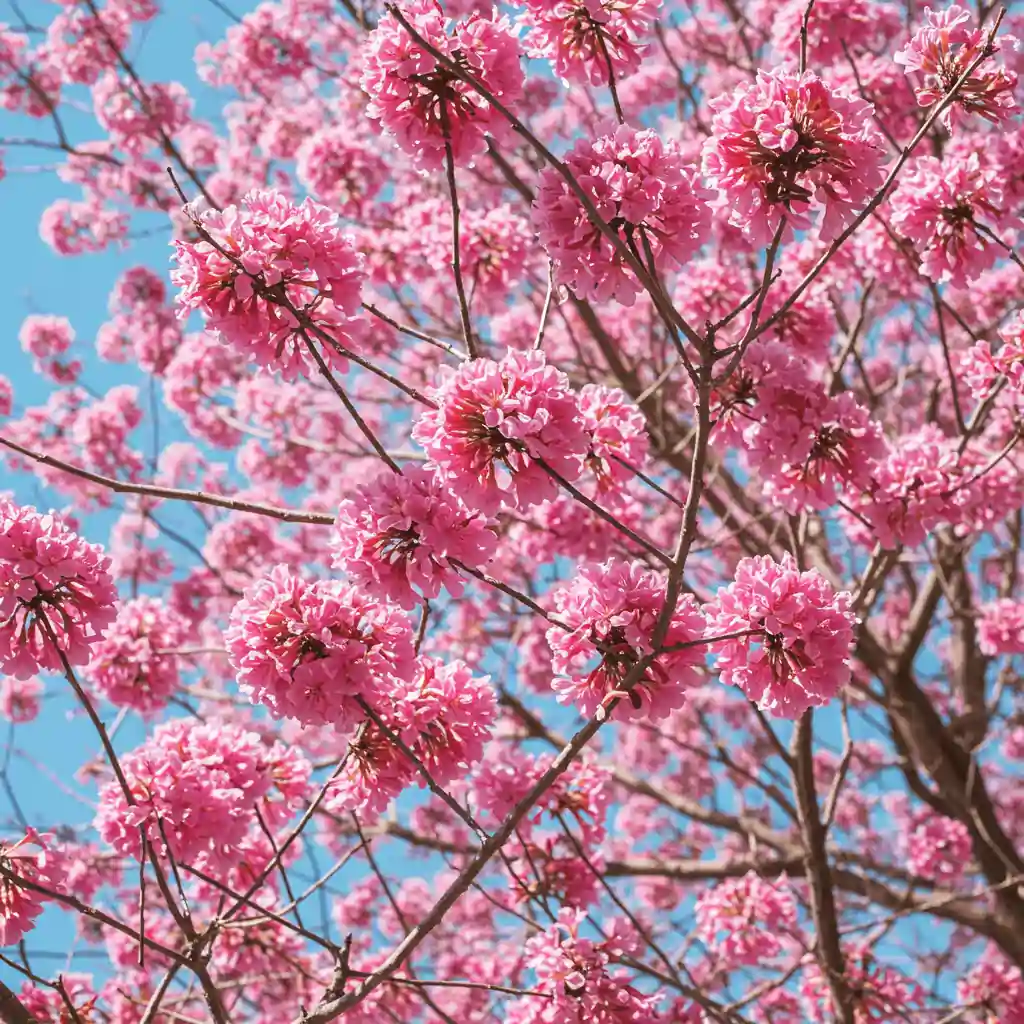Tree with Pink Flowers: This guide helps you identify and grow trees with pink flowers successfully. Learn key traits, care tips, and benefits of adding these plants to your garden.
Understanding how to care for pink flowering trees ensures they thrive, bloom vibrantly, and enhance outdoor spaces. Proper techniques protect their health and longevity.
Key Takeaways
- Identify trees by bark, leaves, and flower shape to choose the right species for your climate.
- Proper soil and sunlight needs vary by tree type—match these to your garden conditions.
- Regular care like watering and pruning boosts flower production and tree health.
- Popular varieties include Yoshino cherry and crape myrtle, each with unique blooming periods.
- Healthy pink-flowering trees add color, improve curb appeal, and attract pollinators like bees and butterflies.
Exploring the Allure of Pink Flowering Trees
Pink-flowering trees are more than just decorations. They combine beauty with deep cultural roots and design versatility. Their blossoms have inspired art, literature, and community celebrations. They are symbols of heritage and creativity.
Historical and Cultural Significance
In Japan, cherry blossoms (Prunus serrulata) symbolize renewal. Their short blooms remind us of life’s fleeting nature. The Cercis canadensis (Eastern redbud) is key in North America’s spring festivals, representing hope.
These trees have decorated royal gardens and simple backyards. They connect generations through shared appreciation.
Aesthetic Appeal in Landscape Design
Designing with pink-flowering trees requires thought. Pair them with evergreens for striking contrasts or tree with white flowers like Yoshino cherry for a balanced look. Strategic placement boosts curb appeal:
- Plant near patios to frame outdoor spaces
- Use as focal points in open lawns
- Combine with low shrubs to highlight blossoms
Pink varieties add flexibility to any design. Pair them with tree with white flowers for seasonal color changes. This ensures your garden stays interesting all year.
Identifying a tree with pink flowers: Key Features

Learning to identify pink flowering trees begins with looking at bark and leaves. Each tree has its own special features. Start by checking the trunk’s surface. A smooth, mottled bark might mean a redbud. On the other hand, a crepe myrtle has bark that peels in patchy layers.
Leaves also give clues. Heart-shaped or oval leaves with serrated edges often point to certain trees. Watching how leaves change color in autumn can also help.
Distinctive Bark and Leaf Patterns
- Bark: Crepe myrtles have cinnamon-colored bark that peels off. This is different from the gray, flaky bark of Japanese maples.
- Leaves: Eastern redbuds have broad, rounded leaves. Flowering crabapples have glossy, ovate leaves.
- Seasonal cues: Look at winter buds. Pink dogwoods have plump, pointed buds. White-blooming cherry trees have scaled, bronze-toned buds.
Comparisons with Trees with White Flowers
Comparing pink and white-flowered trees helps you get better at identifying them. For instance:
- Flower structure: Pink Yoshino cherry has delicate, five-petaled blossoms. White Bradford pear flowers are in dense clusters.
- Bloom timing: Pink redbuds bloom early spring. White-fruited hawthorns bloom later, in late spring.
- Leaf size: Pink-leafed Stewartia has large, elliptical leaves. White-blooming fringe trees have smaller, oval leaves.
“Leaf shape and bark texture are the most reliable markers when distinguishing between similar species,” says the National Gardening Association.
Optimal Conditions for Growing Pink Flowering Trees
Your pink flowering trees need sunlight, good soil, and regular care to bloom well. Most trees, like the Crape Myrtle, need 6–8 hours of sunlight a day. The Eastern Redbud can handle partial shade, but too little sun means fewer flowers.
Soil quality is key. Look for well-drained soil with a pH of 6.0 to 7.0. If your soil is heavy, add compost or sand to help it drain better. Make sure it’s not too wet to avoid root rot.
- Water deeply once a week during dry spells, focusing on the root zone.
- Mulch with 2–3 inches of wood chips to retain moisture and regulate soil temperature.
- Adjust watering in winter—most trees need less water when dormant.
Seasonal changes are important. Young trees need protection from late spring frosts. Prune dead branches in late winter before new growth starts. Watch out for pests like aphids, especially in humid areas.
Climate zones 6–9 are best for many pink flowering trees. Check USDA zone maps to see if your area fits. Adjust your care routine for extreme weather. With proper care, your trees will flourish all year.
Caring for Trees with Pink Flowers and Green Leaves
Proper care keeps your tree with pink flowers and green leaves healthy and blooming. Follow these steps to keep it beautiful and long-lasting.
Watering and Fertilization Best Practices
Water deeply but wisely to avoid stress:
- Water deeply once a week during dry spells, ensuring soil is moist 6-8 inches deep.
- Avoid overhead watering to prevent leaf diseases.
For fertilization:
- Apply a balanced 10-10-10 NPK fertilizer in early spring.
- Use compost in fall to replenish nutrients without overstimulating growth.
Pruning and Maintenance Strategies
Pruning improves shape and airflow:
- Remove dead branches first to stop disease spread.
- Trim overgrown limbs in late winter before new buds form.
Use the right tools for effective pruning:
| Tool | Best Use |
| Hand pruners | Branches under ½ inch thick |
| Loppers | Branches up to 2 inches thick |
| Saw | Thick, stubborn branches |
Check your tree monthly for pests like aphids or scale insects. A well-cared-for tree with pink flowers and green leaves becomes a stunning garden centerpiece.
Exploring Varieties: Small Tree with Pink Flowers and More

Choosing a small tree with pink flowers means looking at variety. Let’s check out the best picks and how to arrange them.
Popular Cultivars to Consider
These trees do well in U.S. weather and add color without taking up too much space:
- Kwanzan Cherry: Double-pink blooms, grows 25–30 feet. Prefers full sun.
- Eastern Redbud: Heart-shaped leaves with magenta flowers. Reaches 20–30 feet.
- Crape Myrtle: Long-blooming clusters in pink shades. Stays compact, 15–25 feet tall.
Designing Your Garden Layout
Place your small tree with pink flowers wisely for the best look. Use this table to plan:
| Tree | Best Placement | Companion Plants |
| Kwanzan Cherry | Open lawn or entryway | Low shrubs like boxwood |
| Eastern Redbud | Part-shade undercanopy | Hosta, ferns |
| Crape Myrtle | Foundation plantings or borders | Annuals like marigolds |
Put smaller plants under taller trees to draw the eye up. Check soil pH every year to keep it healthy. Don’t crowd the roots by following USDA spacing rules.
Optimizing Soil and Climate for Thriving Pink Flowering Trees
Healthy pink flowering trees need the right soil and climate. Make these adjustments to help them grow and bloom better. Here’s what you need to know:
- Soil pH: Most pink-flowering trees like slightly acidic to neutral soil (pH 6.0–7.0). Test your soil and adjust with lime or sulfur as needed.
- Nutrient Balance: Fertilize in spring with a balanced NPK mix (e.g., 10-10-10). Avoid over-fertilizing to prevent root burn.
- Drainage: Make sure the soil isn’t waterlogged. Add compost or plant on raised beds for better airflow and moisture control.
- Microclimate: Protect trees from harsh winds with shrubs or fences. Full sun is ideal, but partial shade works for some varieties.
| Soil pH Range | Action |
| Below 5.5 | Add lime to raise pH |
| 6.0–7.0 | Optimal for most species |
| Above 7.5 | Use sulfur to lower pH |
Regular soil tests (every 1–2 years) help track changes. Adjust gradually to avoid shocking roots. These steps ensure your trees stay vibrant and bloom year after year.
Conclusion
Now you know how to add vibrant pink blooms to your garden. Knowing how to care for these trees is key. They bring color and structure to your outdoor space.
Make sure the soil is good, they get enough sunlight, and you maintain them regularly. Trees like the Eastern redbud or crape myrtle look amazing when planted right.
Using organic fertilizers like Miracle-Gro or Espoma helps them grow strong. Don’t forget to prune them and check the soil pH often. This ensures they bloom well.
Try different tree varieties to make your garden interesting. Use the USDA Plant Hardiness Zone Map to pick the right trees for your area. With these tips, your garden will be beautiful and sustainable.
Check out local nurseries or online stores like Fast Growing Trees for healthy trees. They’ll help your garden thrive.
FAQ
What are some common types of trees with pink flowers?
Popular trees with pink flowers include the Eastern Redbud, Flowering Cherry, and Japanese Cherry Blossom. Each tree has its own beauty and can make your landscape stunning.
How can I identify a small tree with pink flowers?
Look at the flower size, leaf shape, and height of the tree. Trees like the Flowering Cherry and Pink Dogwood have heart-shaped leaves and clusters of blossoms.
What should I consider when caring for a tree with pink flowers and green leaves?
Think about watering, sunlight, and soil type when caring for these trees. Pruning and fertilizing regularly will keep them healthy and blooming.
Are there any specific watering practices for trees with pink flowers?
Yes, water these trees deeply once a week, especially when it’s dry. Make sure the soil drains well to avoid root rot.
How do I choose the right location for planting a tree with pink flowers?
Pick a spot with full sun to partial shade and enough room for the tree to grow. The soil should be well-drained and rich in organic matter.
Can you compare small flowering trees with white flowers to those with pink flowers?
Both types can beautify your garden, but pink flowers are more vibrant. White flowers, like Dogwood, are more subtle. Consider their blooming times and care needs when choosing.

